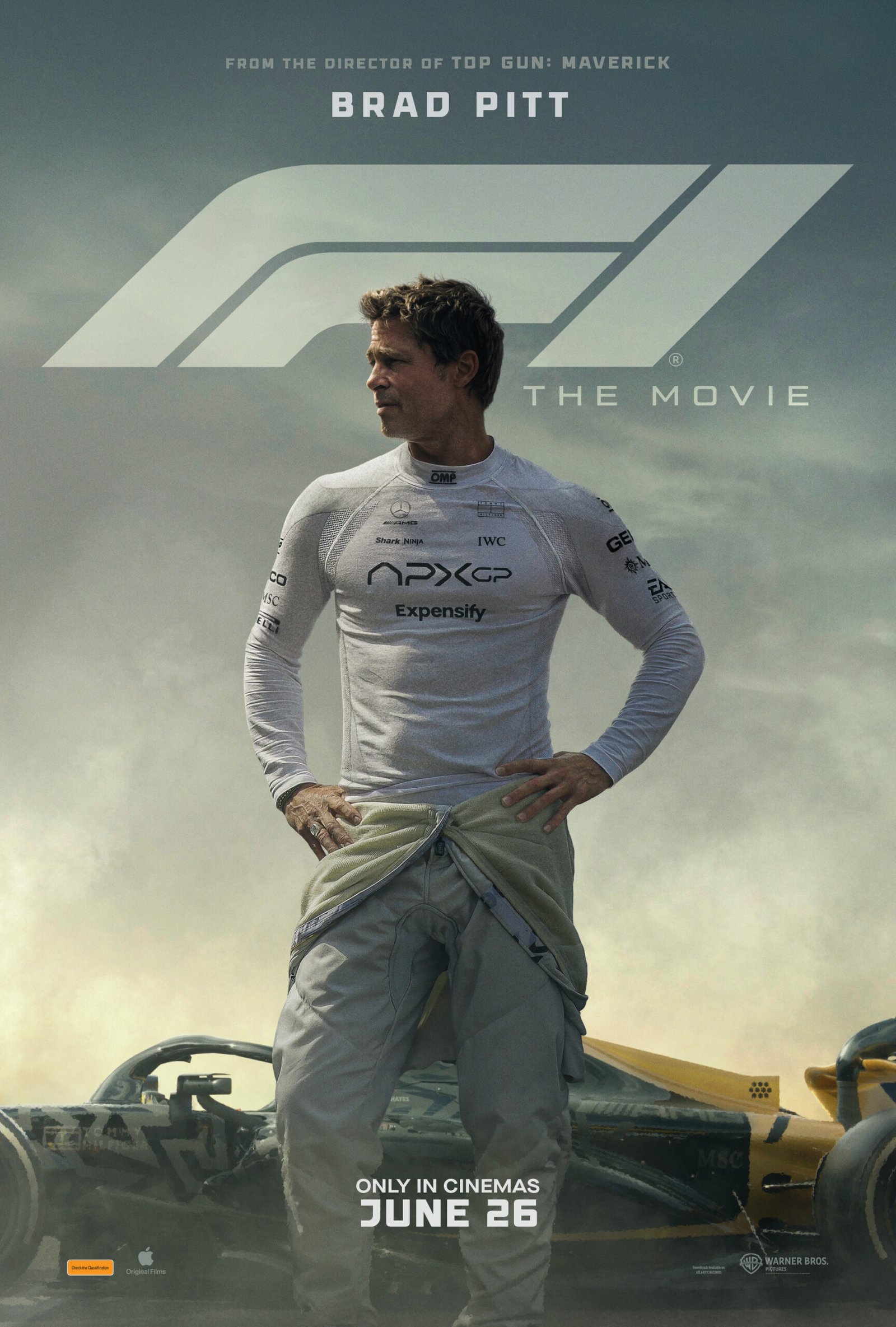From the editors at CultCritics.com
This past weekend, something impossible happened. A movie about Formula 1—a sport many Americans might rank somewhere between competitive dressage and watching paint dry—didn’t just open, it exploded. With a staggering $144 million global debut, Joseph Kosinski’s “F1,” starring Brad Pitt, has become an undisputed blockbuster. The film, a visual feast of roaring engines and high-stakes drama, has successfully sold the sizzle. But now comes the real question: can it sell the steak? Can a perfectly engineered piece of Hollywood fiction convince a nation that the real-life sport it’s based on isn’t, as its detractors claim, the most boring on Earth?
For decades, Formula 1 has struggled to crack the American market. The reasons are as complex as an F1 steering wheel but boil down to a fundamental culture clash. The American sports palate, raised on a diet of frequent scoring, bone-jarring hits, and last-second upsets, often finds F1’s brand of excitement inscrutable. It’s a sport where the most crucial action can be a pit stop measured in tenths of a second or a strategic decision about tire compounds. As one online critic bluntly put it, the sport gives off an “image of snobbery and pretentiousness,” its European glamour and technical jargon forming a velvet rope that keeps the casual American fan at a distance.
Enter “F1,” the movie. Kosinski, who strapped audiences into the cockpit with “Top Gun: Maverick,” applies the same visceral, adrenaline-fueled formula here. The film follows Sonny Hayes (Pitt), a grizzled F1 veteran who comes out of retirement to mentor a young phenom. It’s a classic sports narrative, but the execution is anything but. By embedding custom-built camera rigs into modified race cars and filming during actual Grand Prix weekends, the movie achieves a sense of speed and immersion that, according to early audience reactions, makes the real thing feel lackluster by comparison.
And that is precisely the film’s masterstroke and its greatest heresy.
Where a real F1 race can be a procession dictated by aerodynamics and engine power—often leading to predictable, single-team dominance that drains the drama—the movie manufactures a spectacle of pure, unadulterated combat. Reviews and fan reactions praise the film’s “jaw-dropping” and “exhilarating” racing sequences, which feature far more “rubbin’ is racin'” and strategic, deliberate crashes than the heavily penalized real-world sport would ever allow. The film prioritizes character-driven conflict and on-track battles over the engineering arms race that, while fascinating to purists, leaves many casual viewers cold.
“It’s an impressive technical achievement,” writes one reviewer, noting the movie “repeatedly offers the visceral experience of being strapped to the hood… of one of the speedy cars.” Another fan admitted, “If you switch your F1 analyst brain off… you’ll have a great time.”
This is the core of the film’s appeal and its potential impact. Much like the Netflix docuseries “Drive to Survive,” which hooked a new generation of American fans by focusing on the off-track soap opera and driver personalities, “F1” translates the sport into a language American audiences understand: Hollywood. It sidesteps the inconveniently early race start times, the lack of American heroes on the grid, and the often-frustrating predictability of the actual competition.
Instead, it offers Brad Pitt as the quintessential American hero—aging but unbowed, defying the odds with grit and a bit of rule-bending. It presents a version of Formula 1 where the driver, not the car, is the ultimate weapon. It’s a compelling fantasy, one that has clearly resonated at the box office.
The ultimate success of this cinematic gambit won’t be measured in ticket sales, but in television ratings for the actual sport in the months and years to come. The film may very well trick a significant portion of the population into believing Formula 1 is a heart-pounding spectacle. The real test will be whether they stick around when the Hollywood-crafted narrative fades, the Hans Zimmer score dissipates, and they’re left with the nuanced, strategic, and yes, sometimes processional, reality of a Sunday Grand Prix. “F1” has built the perfect gateway. Now, the sport itself must prove it’s a destination worth staying for.

